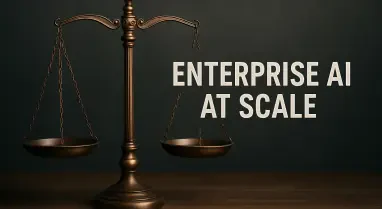Imagine a world where cyber threats evolve at an unprecedented pace, leaving businesses scrambling to protect their data with outdated, manual processes that simply can’t keep up with the sophistication of modern attacks, and in this challenging landscape, a new wave of innovation is emerging to transform how companies safeguard their critical assets. Druva, a prominent leader in data protection, has stepped into the spotlight with its enhanced DruAI platform, integrating a suite of autonomous AI agents designed to redefine cyber resilience. Built on cutting-edge technology from Amazon Bedrock AgentCore on AWS, this advancement promises to tackle data security and recovery with unmatched speed and precision. By embedding artificial intelligence directly into its solutions at no extra cost, Druva is setting a benchmark for the industry, demonstrating a commitment to empowering businesses against ever-growing digital risks. This development marks a pivotal moment, highlighting the potential for AI to not just assist but to autonomously manage complex security tasks.
Unveiling the Power of DruAI’s AI Agents
Transforming Data Protection with Specialized Roles
Druva’s latest enhancement to the DruAI platform introduces a trio of specialized AI agents, each crafted to address distinct aspects of cyber resilience with remarkable efficiency. Data Agents dive deep into telemetry and historical data, uncovering critical signals, trends, and potential risks that might otherwise go unnoticed. These agents enable businesses to stay ahead of threats by proactively identifying vulnerabilities before they escalate into major issues. Meanwhile, Help Agents serve as virtual troubleshooters, guiding users through complex incidents and offering actionable solutions to resolve problems swiftly. Action Agents take this a step further by executing precise tasks like workload recovery or policy creation, streamlining operations that once demanded extensive manual intervention. Together, these agents create a seamless system where entire applications or EC2 instances can be restored with a single command, eliminating the tedious process of rebuilding infrastructure piece by piece.
Boosting Operational Efficiency Through Automation
Beyond their individual roles, the AI agents within DruAI are reshaping operational efficiency by automating intricate processes that traditionally consumed significant time and resources. The ability to interpret natural language requests allows users to interact with the platform intuitively, reducing the learning curve and enhancing accessibility across teams. For instance, routine data protection tasks that once took hours can now be managed in mere minutes through automated workflows driven by these agents. This shift not only accelerates response times but also frees up valuable human resources to focus on strategic initiatives rather than repetitive chores. Additionally, Druva has implemented a testing environment with synthetic datasets, enabling customers to simulate recovery scenarios and refine AI prompts in a secure sandbox. Such forward-thinking features ensure that businesses can trust the reliability of these tools before deploying them in real-world situations, minimizing risks and maximizing confidence in their cyber resilience strategies.
Shaping the Future of Cyber Investigations
Enhancing Threat Detection and Response Times
One of the standout capabilities of DruAI’s AI agents lies in their potential to revolutionize cyber investigations by automating the detection of anomalies and suspicious patterns. By sifting through vast amounts of data in real-time, these agents pinpoint irregularities that could indicate a security breach, drastically cutting down the time needed for manual log inspections. This rapid identification is paired with the generation of executive-level summaries, providing decision-makers with clear, concise insights to act upon immediately. Such automation addresses a critical pain point in cybersecurity where delays in response can lead to significant damage. The impact is evident in the platform’s track record, with thousands of customers engaging in AI-powered conversations to resolve issues faster than ever before, showcasing a tangible improvement in managing digital threats with precision and speed.
Setting Ambitious Goals for Rapid Resolutions
Looking ahead, Druva has outlined bold targets for DruAI, aiming to reduce the average time-to-resolution for cyber investigations by up to 70 percent within the next year. Plans are also in place to enable 90 percent of routine data protection tasks through natural language interactions, further simplifying user experiences. Backup troubleshooting, often a time-intensive process, is expected to shrink from hours to mere minutes, reflecting a broader industry push toward automation and efficiency. These aspirations are grounded in the platform’s proven success, with over 60 percent of customer issues already resolved directly via AI, and support cases seeing resolution times cut by more than half due to telemetry-based context. Moreover, stringent data integrity controls ensure a zero percent hallucination rate, reinforcing trust in the system’s outputs. As cyber threats grow more complex, such advancements signal a future where AI-driven tools become indispensable for maintaining robust security postures.
Pioneering Security in AI-Driven Solutions
Security remains a cornerstone of DruAI’s design, with isolated large language models (LLMs) and private retrieval-augmented generation (RAG) ensuring that sensitive customer data stays protected. Encrypted on the Druva platform, this data is never shared with third parties, addressing common concerns about privacy in AI applications. This commitment to safeguarding information builds a foundation of trust, crucial for businesses adopting these technologies. Furthermore, the potential integration of DruAI with customers’ AI pipelines hints at an evolving role for data protection platforms in supporting broader AI ecosystems. While still speculative, such directions could position Druva as a key player in not just resilience but also in enabling innovation across industries. This focus on secure, reliable operations has already set a high standard, reflecting a balance between technological advancement and the practical need to protect critical assets in an increasingly digital world.






